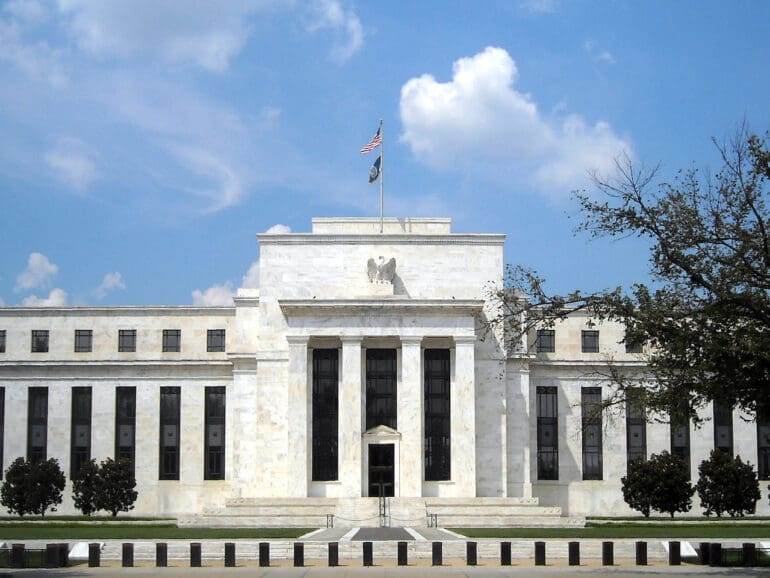The banking crisis brought with it a spotlight on banks’ involvement with emerging technologies like crypto.
Silvergate and Signature Bank, two of the banks that failed during the fateful period, had heavy ties to the crypto industry, both holding the title of “go-to bank for crypto companies”. While both failed for very different reasons, reporters and regulators alike have turned to crypto as weak points of their business plan.
RELATED:
- Silvergate: Another fall from the CeFi house of cards
- SVB and Signature: The big non-bailout
- The DeFi industry take on the banking crisis
In its aftermath, The Federal Reserve announced it’s intention to foster a supervision program for “novel” activities. They released further details of the program last week.
“The goal of the novel activities supervision program is to foster the benefits of financial innovation while recognizing and appropriately addressing risks to ensure the safety and soundness of the banking system,” wrote the Federal Reserve.
“The Program will focus on novel activities related to crypto-assets, distributed ledger technology (DLT), and complex, technology-driven partnerships with nonbanks to deliver financial services to customers.”
The Fed’s move to “supervise” the banking system’s involvement comes as regulators continue to debate who will have the ultimate authority over the crypto industry itself.
Digital Innovation Becoming Paramount
The announcement came set against a backdrop of traditional financial institutions turning their sights towards digital innovation.
In the 2023 Cornerstone Advisors “What’s going on in Banking” report, results noted the rising threat of fintechs. Big Tech firms like Apple and Fintechs such as PayPal posed an increasing concern to banks and credit unions. Data showed fintechs and neobanks dominating consumers’ preference for new checking account openings while both megabanks’ and regional banks’ share of new accounts plummeted.
RELATED: Will fintech take over regional banking?
Perhaps in response, digital innovation has become a priority for institutions. Bank fintech partnerships have steadily grown, and with it, further intentions to increase innovation strategies, embracing emerging technologies like DLT and digital assets.
However, the risks of incorporating such technologies into the banking framework are in the front of regulators’ minds. Many have commented on the stress crypto volatility could have had on the fractional banking framework in the aftermath of Signature Bank’s collapse.
Such concerns were presented in the letter outlining the Federal Reserve’s proposed approach for the supervision program. “Given the novelty of these activities,” the board wrote, “They may create unique questions around their permissibility, may not be sufficiently addressed by existing supervisory approaches, and may raise concerns for the broader financial system.”
The Board highlighted that their supervision would extend the breadth of the banking system, including entities with less than $10 billion in assets. “The level and intensity of supervision will vary based on the level of engagement in novel activities by each supervised banking organization,” the letter continued.
AFC calls for transparency in program
For the most part, the Program is considered a “quiet win” for fintech, noting its disruption of traditional finance.

“Modern and forward-looking regulation will strengthen the banks and fintech companies that innovate without compromising on consumer safety,” said Phil Goldfeder, CEO of the American Fintech Council. He explained that this was a “critical juncture” for fintechs and the banks that partner with them.
“Pragmatic regulators combined with responsible innovators have a unique opportunity to truly shape the future of finance,” he continued.
However, Goldfeder, like many others, stated the importance of transparency in the program. He explained that it could hinder innovation if clarity isn’t installed.
Clarity has long been an issue in regulating emerging technologies like crypto. Digital asset innovators, facing an onslaught of (at times contradictory) enforcement actions in 2023, have turned their sights on other nations with more established rules for the sector.
“It is critically important that this program be as transparent as possible,” warned Goldfeder. “And that clear standards are established and communicated before enforcing supervisory views on banking institutions.”
As the Federal Reserve develops the program going forward, the US’s potential for innovation could hang in the balance.
“Without clear and established standards, regulators risk deterring innovation and inconsistently applying requirements across institutions leading to a lack of clarity and the potential for unfair outcomes,” he concluded.


